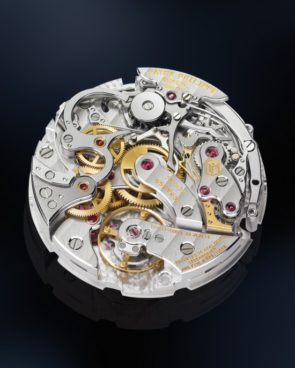
Important news for Patek Philippe, who presented a new hand-wound chronograph movement entirely developed and manufactured in-house. Based on the traditional column-wheel architecture, the Calibre CH 29-535 PS is premiered in a wrist chronograph intended exclusively for women's wrists, with the meaningful name 'Ladies First Chronograph'. The Calibre CH 29-The 535 PS paves the way for new developments and a new generation of hand-wound wrist chronographs with or without additional complications, and will, in due course, replace it, the current Calibre CH 27-70 (Nouvelle Lémania base) as a traditional hand-wound chronograph.
What we expect now is to see it mounted on a male model as well, and we therefore confidently await the next Basel Motor Show.
The official presentation took place last week, on the occasion of the inauguration of the Patek Philippe Salons at Place Vendôme in Paris, which had recently been entirely renovated and refurbished.
This is therefore the first launch by Thierry Stern as Patek Philippe President (his father Philippe is now Honorary President).
But let's take a closer look at its characteristics:
The Calibre CH 29-535 PS is a column-wheel movement. On its dial, the large chronograph hand, the small seconds and the instant-jerk minute counter. Its large Gyromax balance with four beams and four masses pulsates at a frequency of 4 Hz (28 800 vibrations per hour). The calibre has a 65-hour power reserve (more than 58 hours in engaged chronograph mode). The engagement baseplate is in the classic S shape. The movement is also equipped with a "stop seconds" system that allows very precise time-setting. This movement boasts the certification of the Patek Philippe and si distinguished by six patented innovations:
optimisation of tooth profile (che eliminates the risk of the hand jumping or bouncing at the moment of engagement, prevents any oscillation of the chronograph hand, increases the efficiency of energy transmission and reduces friction and thus also wear within the movement);
better adjustment of gear penetration (for a finer and more precise adjustment);
improved engagement synchronisation-brake (which ensures a smoother adjustment of the controls and increases their precision: the watchmaker only has to intervene at one point instead of two; the system also avoids any 'waviness' of the hand when engaging and stopping);
piercing of the minute counter cam (the cam of the minute counter has been lightened so as to cushion the shocks when resetting to zero, thus considerably reducing the vibration of the hand);
self-adjusting zero-setting hammers (thus avoiding any mechanical adjustments to the minute hammer, thus increasing the reliability of the mechanism);
rotation of hammers 'between stones' (this system ensures precise adjustment of the height of the hammers and improves their rotation).





